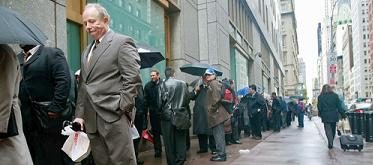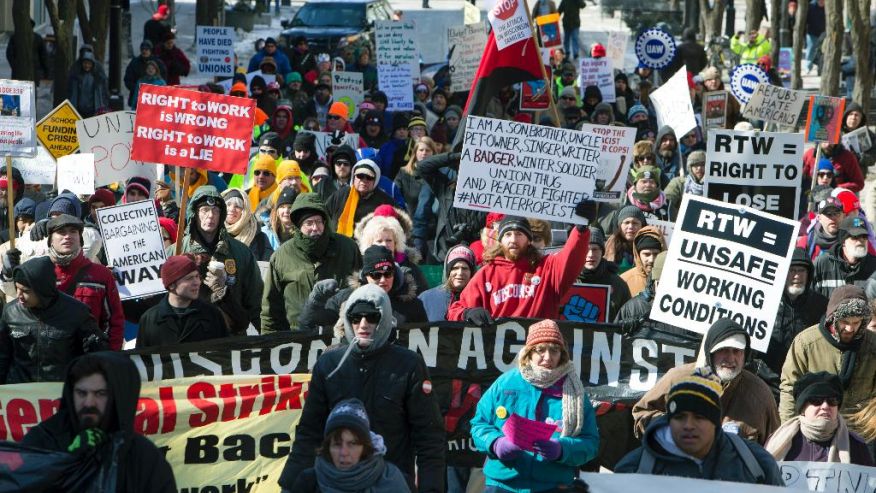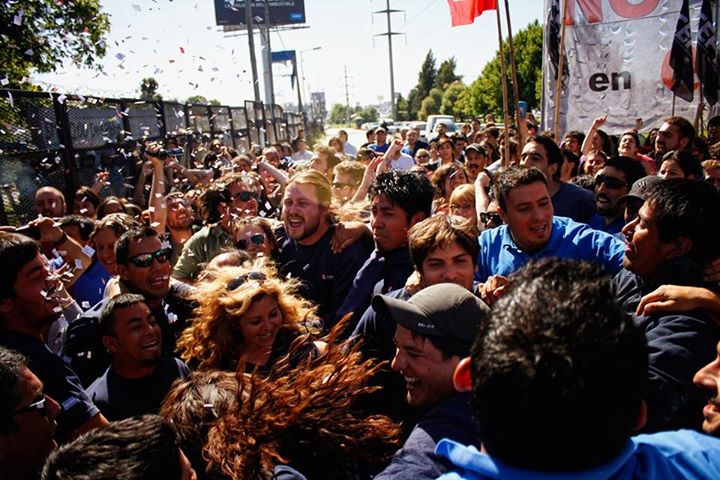Economic crisis
10 million unemployed workers in the United States
20/11/2008

More unemployed workers, more poor people, and for a longer time
The figure that overshadowed the economic panorama these last few days was 6.5% unemployment in the United States. All analysts now predict a rapid increase that could reach 7% this year and around 9% in 2009. Unemployment and the fall in consumption are added to data that show the definitive entry of the US economy into a recessionary cycle.
The data that caused most pain were the October job losses (240,000) and the review by the US Department of Labor of the September job losses. That organization had anticipated the elimination of 159,000 jobs, but by the end of September the sum turned out to be 284,000 (almost double).
Thus far in 2008, 1,200,000 jobs have been eliminated, more than half of which disappeared in August, September and October. The branches most affected were industry (90,000 jobs lost in October, in an obvious setback during the last few months) and construction (49,000 jobs lost) which had been one of the big sources of work in the last few years (in connection with the real estate bubble). In only two years in the construction sector, 663,000 jobs were lost (see "The jobs that were lost"). This, without taking into account that in this sector a percentage of employment is illegal, where immigrants (a big part of the undocumented) tend not to be counted in statistics because of the informality of working conditions.
Less work and fewer rights
At this time, the share of working adults is at its lowest level in the last 15 years: 61.8%. Among adults, the rate of employment of males is the lowest since the Department of Labor began keeping statistics in 1948 (with the exception of 2 months during 1983).
The number of unemployed people climbed to a total of 10,100,000, the biggest since 1983. Among them, the groups with the most unemployment are the Latino community (8.8% are without jobs) and the African American community (11.1%), while unemployment among white workers is 5.9%. We should also note that women and young people in all groups suffer higher rates of unemployment. Only 32% of the unemployed gain access to unemployment insurance. Many of the newly unemployed fail to meet the requirements to enjoy that right: part-time workers and those who have not worked for the minimum period (which varies by state), remain outside. In the 2001 recession, 45% of the unemployed gained access to the insurance. In the 1950’s, the rate was greater than 50%.
Taking under-employment into account, the rate of people with problems finding work has increased to 11.8% (last year it was 8.4%). This category includes part-time workers - who have not found full-time jobs or whose working hours have been reduced - (6,700,0000) and those who are no longer seeking work (calculated at 484,000 in the most recent survey). 1,600,000 people who want to work, but did not go out to seek jobs during the four weeks before the census, would also belong in this group.
Another data point that makes the already bitter situation worse is the fact that 22% of the unemployed (2,300,000 or 1 out of every 5 unemployed) has failed to find work for 6 months or more; in the last 25 years, this level has never risen. It is estimated that 800,000 people have already been deprived of unemployment insurance, and in November and December, an additional 350,000 more could be (National Employment Law Project). The same center estimates that for the half of mortgages that are late or have foreclosure notices, the reason is that the owners have lost their jobs or their source of income.
The automotive sector, that serves as a thermometer for the US economy’s state of health, continues to show signs of having entered into recession. Last week, they had announced the fall in their sales (Chrysler, by 35%, Ford, by 30%, and General Motors, by 45%). Although Congress approved the $25 billion assistance package for the Big Three automakers, they said it is not sufficient and announced layoffs, suspensions and job cuts. General Motors’ stock has fallen to $3.36 per share, the lowest market price since 1946
The Big Three automakers announced job cuts and layoffs for the end of 2008 and the beginning of 2009 (see “Layoffs continue”): General Motors said it will cut 30% of its labor force; Ford also announced a 15% personnel reduction this year, plus a 10% additional reduction in February (bloomberg.com).
Inequality
In the last 30 years, the gap between rich and poor has grown enormously. Proof of this is the abysmal difference between what a CEO collects and what an average worker earns. If in the decade of the 1970’s, a CEO collected 27 times the average wages of a worker, in 2007 this difference climbed to 275 times.
The bursting of the real estate bubble revealed how the astronomical increase in indebtedness of working families was what fueled the consumption of the last decade, while real wages remained virtually stagnant. This is now the situation of many impoverished groups facing debts they cannot pay (mortgages and credit cards).
Layoffs increase more and more, affecting ever more people and longer. Businesses are favored also by the flexibility of contracts, since the part of the working class that is unionized (9% in the private sector) and can collectively negotiate better conditions at work is in the minority (although the union bureaucracy, clearly, is no guarantee). In this context, the AFL-CIO union bureaucracy has been a big collaborator in liquidating what workers had previously conquered and their rights, by dividing and weakening the ranks of labor.
Translation by Yosef M.













